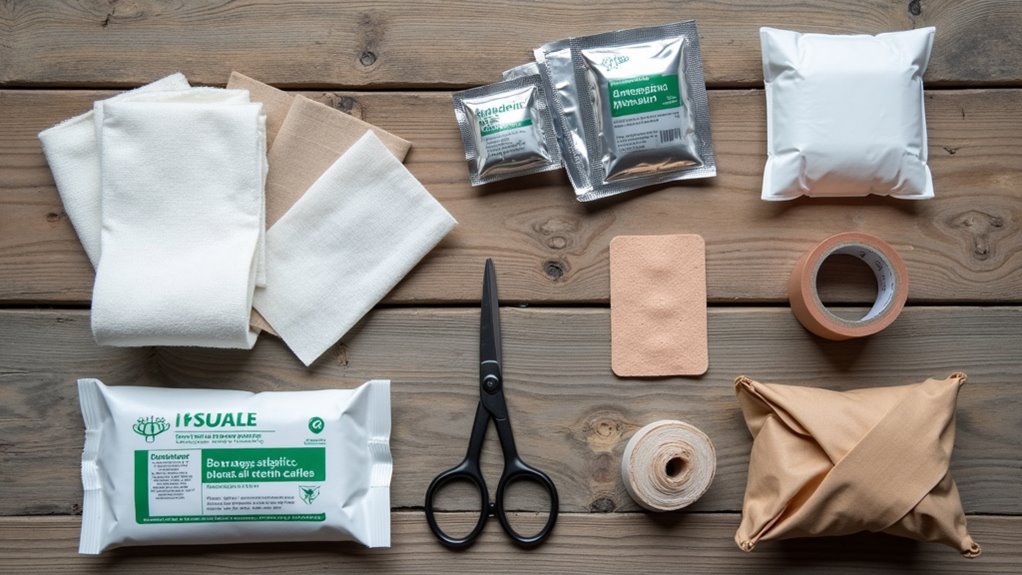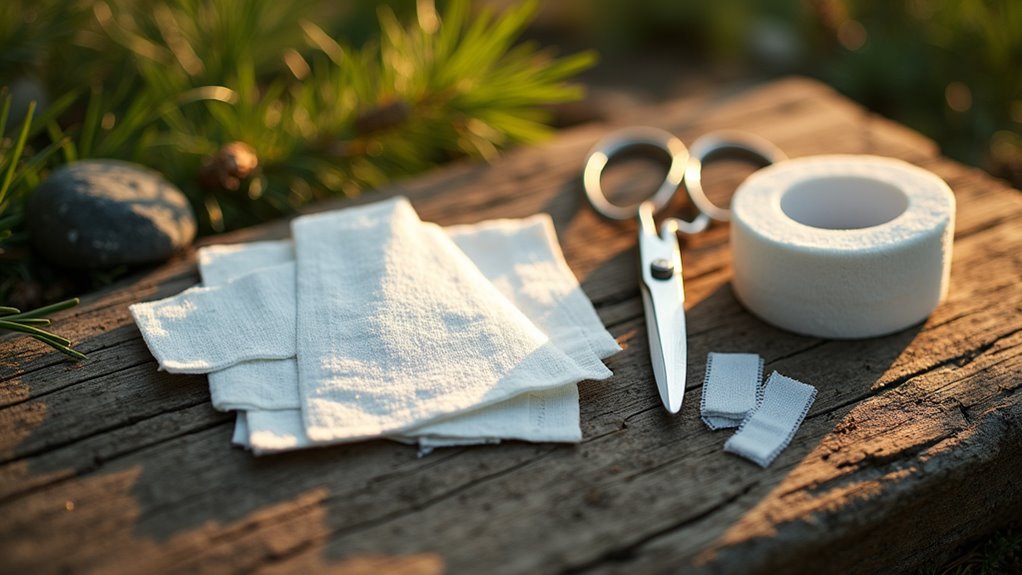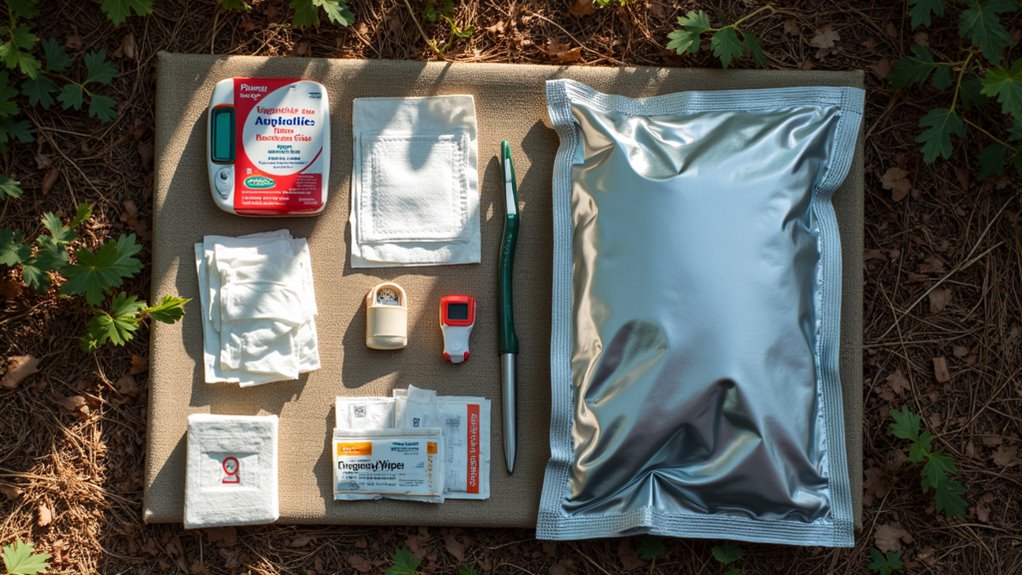Physical Address
304 North Cardinal St.
Dorchester Center, MA 02124
Physical Address
304 North Cardinal St.
Dorchester Center, MA 02124

In remote wilderness, these essential first aid supplies could mean the difference between a minor mishap and a dangerous emergency.
When you’re miles from the nearest hospital, a well-stocked first aid kit becomes your lifeline. You can’t predict when someone will slice their hand while prepping dinner or suffer an allergic reaction to an unknown plant. The difference between a minor setback and a trip-ending emergency often comes down to having the right supplies within arm’s reach. But knowing what to pack isn’t as straightforward as you might think.

When you’re miles from the nearest hospital, proper wound care supplies become your first line of defense against infections and complications. Pack various adhesive bandages in multiple sizes – standard strips won’t cover everything.
Include gauze pads and medical tape for larger wounds that need proper coverage and secure attachment.
Proper wound coverage requires quality gauze pads paired with reliable medical tape for secure, protective dressing of significant injuries.
Don’t forget antiseptic wipes or alcohol pads to clean wounds before bandaging. They’re lightweight and prevent bacterial infections that could ruin your trip.
Add rolled gauze for wrapping sprains or securing bulky dressings in place.
Include butterfly bandages for closing deeper cuts without stitches.
Pack elastic bandages for joint support and compression.
Finally, bring disposable gloves to protect yourself while treating others and maintain sanitary conditions during wound care procedures.
These supplies are especially crucial for families planning river rafting adventures where water activities increase the risk of cuts and scrapes.
Even minor aches can become major problems when you’re hiking steep trails or setting up camp, so stock your first aid kit with essential pain relievers. Pack both ibuprofen and acetaminophen—ibuprofen reduces inflammation from sprains and muscle strain, while acetaminophen works better for headaches and general pain without stomach irritation.
Don’t forget antihistamines like Benadryl for allergic reactions to plants, insects, or food. Include both oral tablets and topical cream for flexibility. If anyone in your group has severe allergies, bring their prescribed EpiPen and know how to use it.
Add aspirin for potential heart issues and topical pain relievers for sore muscles. Check expiration dates before your trip and pack medications in waterproof containers to keep them effective. When selecting your campsite location, consider proximity to medical facilities in case serious injuries occur that require professional treatment beyond basic first aid.

Beyond medications, your camping first aid kit needs reliable tools that can handle serious emergencies when professional help isn’t immediately available. These essential items can mean the difference between managing a crisis effectively and feeling helpless in remote locations.
Your emergency toolkit should include:
Don’t forget duct tape for securing splints and emergency repairs. These tools transform your basic first aid supplies into an exhaustive emergency response system. When you’re not dealing with emergencies, these same tools can enhance your family camping activities and help create memorable outdoor experiences.
You’ve got your first aid kit packed tighter than a sardine can—congratulations, you’re now the designated camp medic! Don’t worry when everyone suddenly develops mysterious ailments requiring your expert bandaging skills. That kid who wouldn’t eat vegetables at home? He’ll gladly swallow your ibuprofen. Your antiseptic wipes will become more precious than gold, and you’ll wonder why you didn’t just bring a mobile hospital instead.